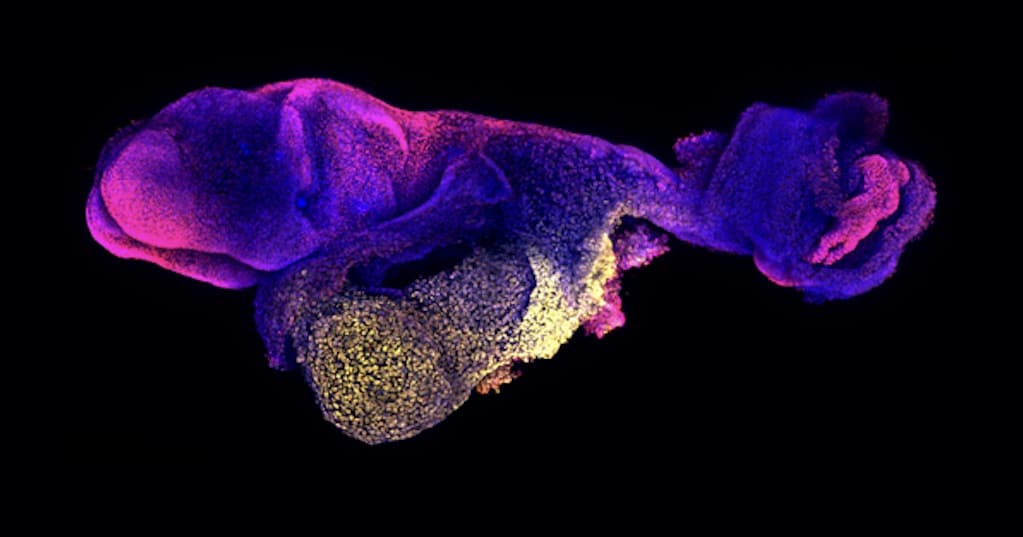 Culture & Ethics
Culture & Ethics
 Life Sciences
Life Sciences
 Medicine
Medicine
Scientists Are Close to Creating Human Embryos from Stem Cells

During the great embryonic-stem-cell debate in the early 2000s, I personally witnessed scientists blatantly mislead legislators about biotech issues such as cloning, adult stem cells, and the biological nature of embryos in order to gain funding and/or resist regulations. It was an effective, but disgraceful, tactic that disrespected the democratic process about crucial issues of morality and public policy.
Now, with the creation of human “synthetic embryos,” aka, “embryo models, or “embryo replicas,” which are constructed with pluripotent stem cells, I hope we are not slipping back into those bad old days of mendacity. But I worry. A recent story about the breakthrough in Science News contains an incomplete description about human embryology that impacts the ethical stakes about what is being done:
What are human embryo models?
Before answering that question, Amander Clark, president of the International Society for Stem Cell Research, says we first need to understand that a human embryo is the product of fertilization of an egg and sperm.
True! Pardon my frustrated digression, but that basic fact of biology was repeatedly denied during the stem-cell debate by scientists who claimed that such embryos made in a petri dish were not really embryos. They were mere “pre-embryos,” the scientists claimed, or a mere collection of cells.
Back to the Story
And here is where it gets problematic:
Embryo models, on the other hand, self-assemble from pluripotent stem cells — ones that have the power to make nearly any type of cell in the body. “Therefore, embryo models do not meet the clinical, medical or scientific definition of an embryo because they do not originate from the product of fertilization by two gametes,” says Clark, a stem cell scientist, developmental biologist and geneticist at UCLA. [Emphasis added.]
But That’s False Scientifically
Or at least, it’s an incomplete description. Human embryos can also be constructed through somatic-cell nuclear-transfer cloning, which involves no sperm or fertilization at all. Such human cloning has already been done. And just as Dolly the cloned sheep was every bit a sheep, cloned human embryos are as human as those that come into being through fertilization.
The real ethical question is whether these “models” are organisms or merely cell lines developing in a dish. That distinction matters morally — or at least, it should — because if they are indeed organisms, that makes them nascent human beings, and we are opening the door wider than it already is to experimentation on the living unborn. Indeed, once artificial gestation chambers are perfected, there would be no limits on such research because there are now no time restraints in biotechnological ethics guidelines — which are voluntary, anyway — during which unborn humans can be experimented upon.
That would allow what is sometimes called “fetal farming,” the grotesque specter of live fetal experimentation. This isn’t alarmism. It has been done before. Back in the late 1960s, when it came to light, there was a national outcry. Would there be today if, say, scientists could gestate human beings made from “artificial” scientific processes for the purpose of experimentation or organ harvesting? I wonder.
These embryo “models” are probably not organisms. But the day of such artificial manufacture of human beings from stem cells who could be gestated like a naturally conceived embryo seems to be getting very close:
Hanna’s models described in a June 15 preprint posted at bioRxiv.org have a reasonable facsimile of both a yolk sac and the placenta precursor, Martinez Arias says, and make structures with “uncanny” resemblance to those of embryos at 14 days of development.
The process to achieve an embryo model so closely resembling the real thing was a long one, Hanna says. His team first worked out how to grow mouse embryos past this developmental stage in lab dishes. Using mouse embryos as their “experimental compass,” the researchers then figured out how to assemble a mouse embryo model from stem cells. From there, the team used the tricks they’d learned to grow human stem cells in conditions that coaxed them to self-assemble into structures approximating post-implantation embryos.
The self-assembly bypassed the blastocyst stage and moved directly to something akin to a post-implantation embryo, his team found. “Maybe the embryo [models] are deficient because we don’t go to through the blastocyst [stage]. I don’t think so. But I can’t exclude it at the moment,” Hanna says.
Racing Ahead of Us
Once again, biotechnology is racing ahead of our capacity to intellectually digest what is happening, and enforceable ethical boundaries on human studies are not even being contemplated.
The “anything goes” ethical peril in biotechnology is real. The need for a serious discussion about this and other such experiments such as CRISPR germ-line genetic engineering is more urgent than ever. But I suspect the crickets will keep chirping.
Cross-posted at National Review.
